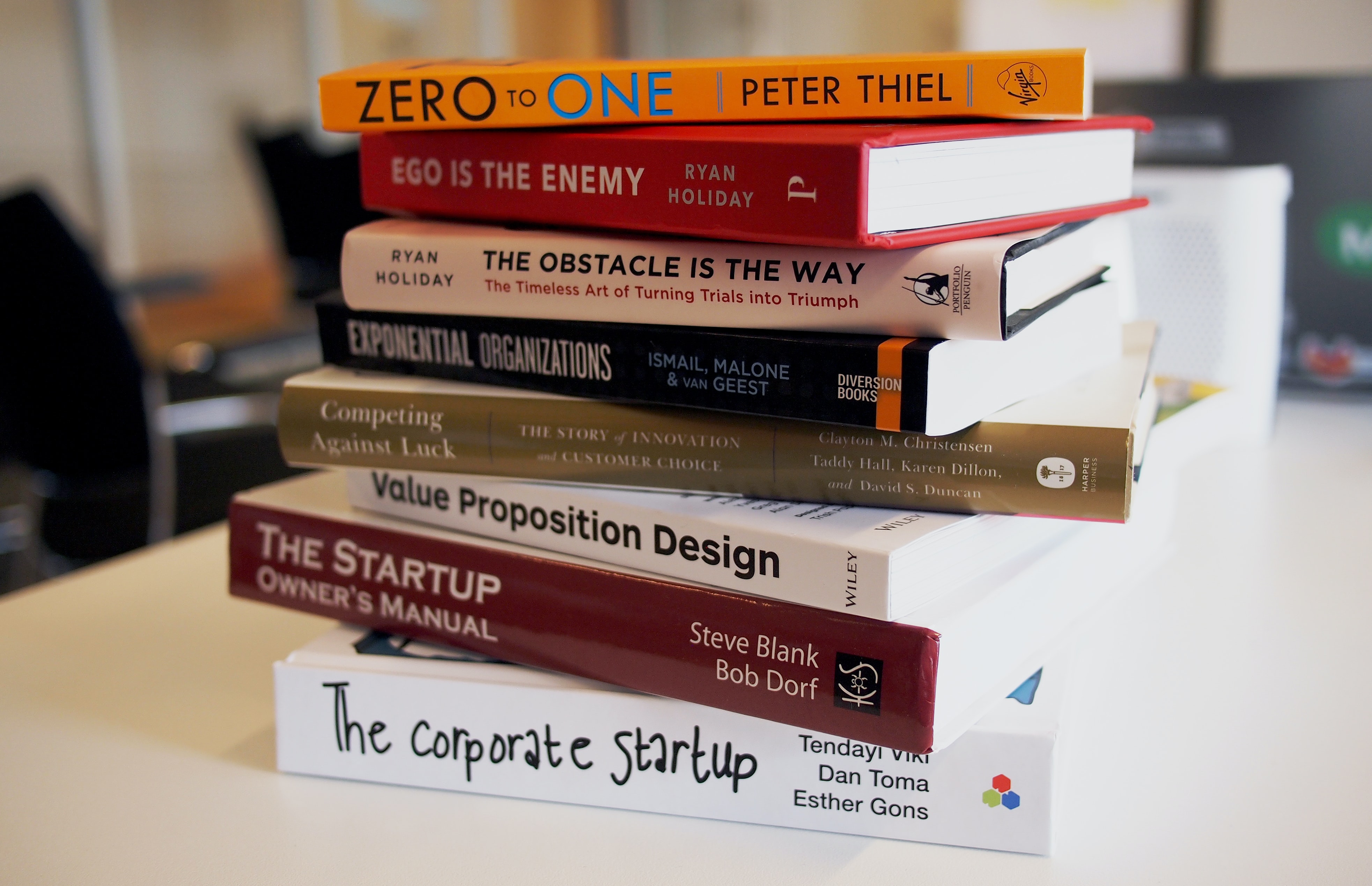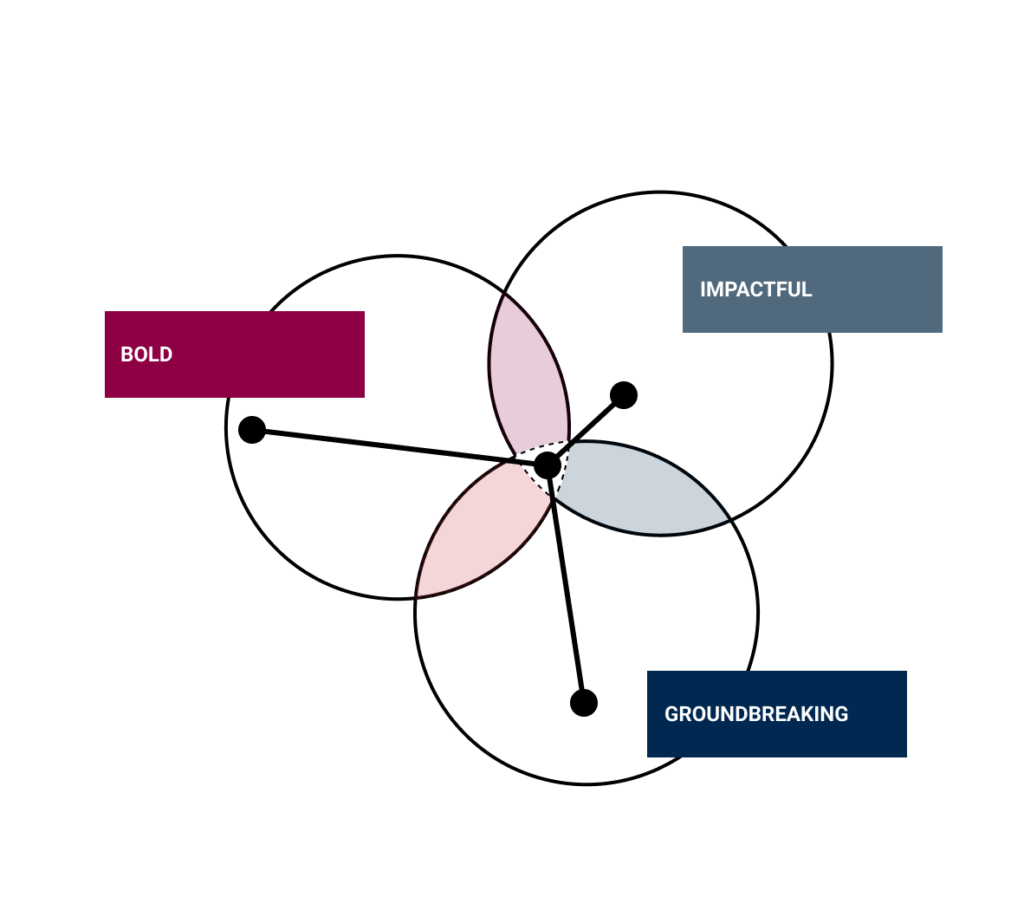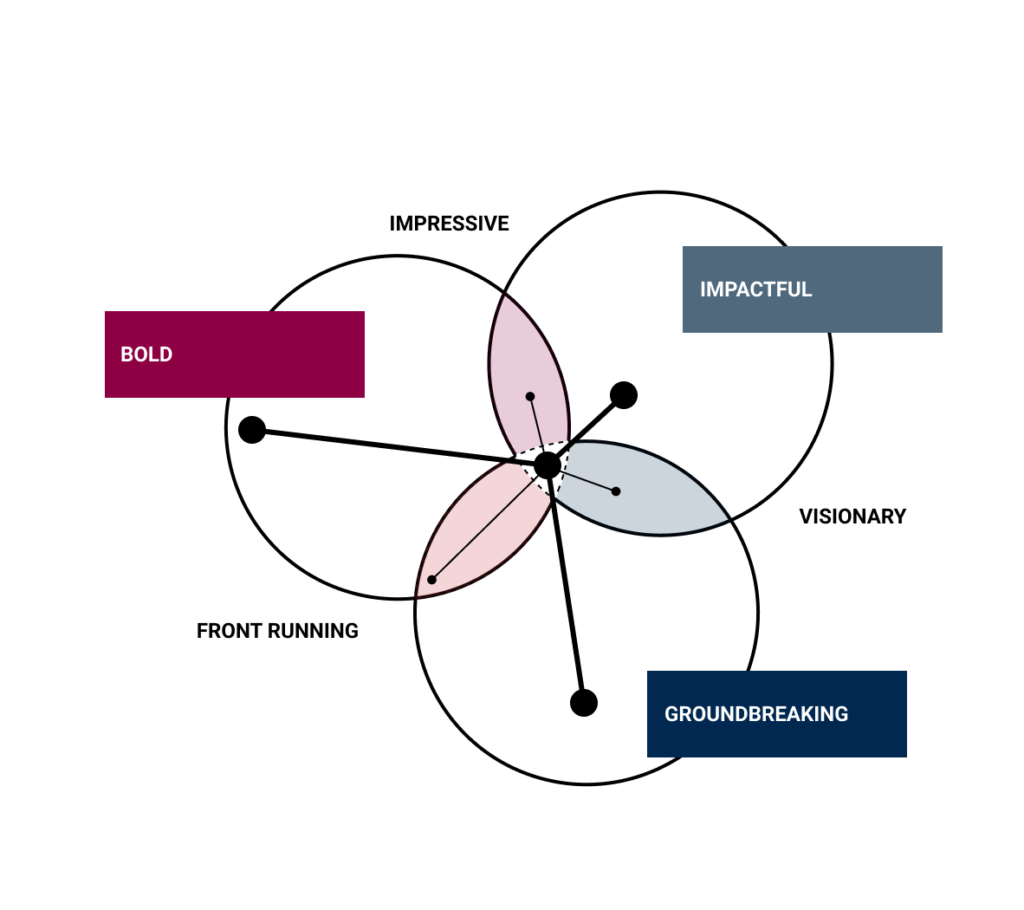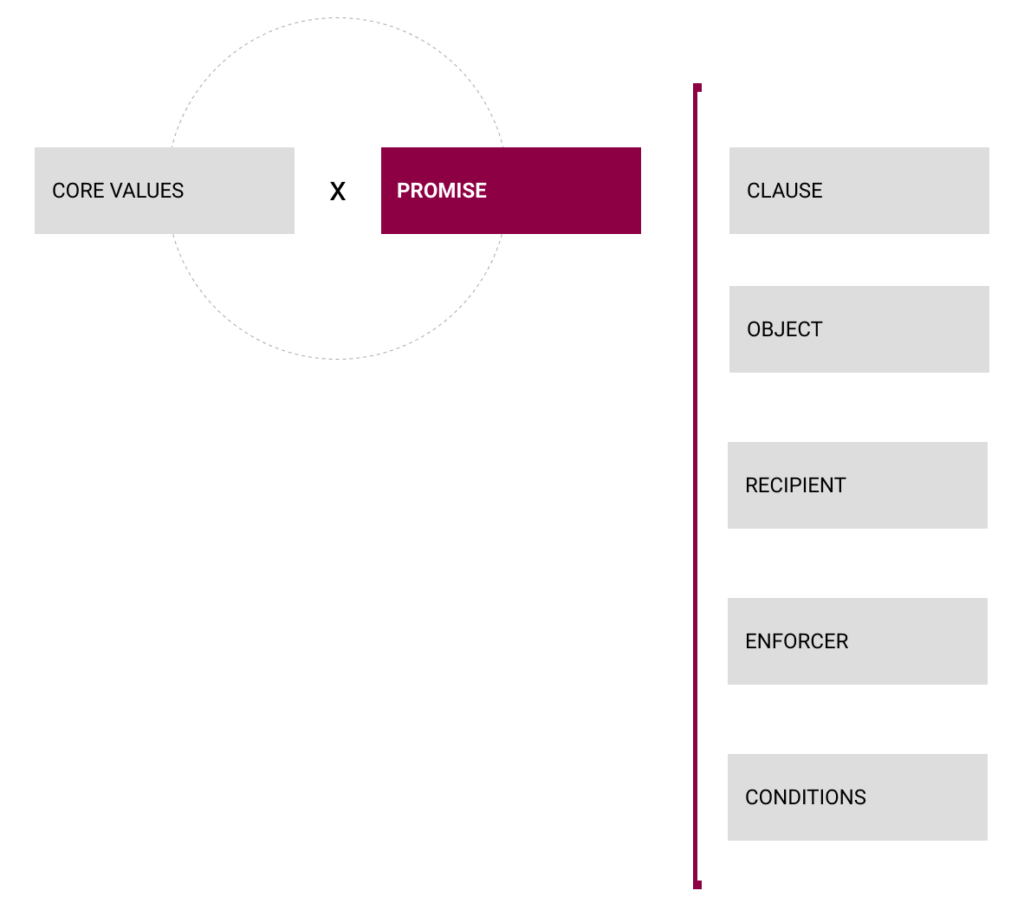Tactical Value Proposition Breakdown Analysis

A breakdown analysis of our own Value Proposition as a “Value Proposition factory”.
Breakdown Analysis
We craft outstanding Value Propositions for outrageously reckless Brands and Organizations
Who want to dominate the market with new lines of business and innovative ventures
You know what they say: “A strong value proposition is the best marketing you can give to your customers”. When you present them with an experience they want, they’ll remember you. And when you give them clear messages, simple, direct, effective, and true, they’ll remember you even better.
Messages with characteristics like these are worth many words. This may sound familiar to anyone who has ever read or listened to Steve Jobs talk about Apple’s products or advertising campaigns: “A lot of times, people don’t know what they want until you tell it to them.” But what he really meant was: “A lot of times, people don’t know what they want until you show it to them“.
Tactical is not a product company, therefore we need to rely on a Value Proposition to allow our audience to “visualize” our offering, in a simple, direct, and true way.
Let’s break down the Tactical Value Proposition, how we craft it and why we build it that way, using the frameworks we developed.
THE STRUCTURE
A strong and effective Value Proposition is composed of three main macroblocks, of equal importance and relevance. You can’t build a solid Value Proposition if one of these blocks is missing or it is ill-formulated, the result will be fragile and difficult to fulfill.

These three main blocks are:
-
The Core Values (CVs)
-
The Promise (P)
-
The Unique Selling Proposition (USP)
Imagine you have to deliver a cake: you can bake a simple cake with a basic foundation of a sponge cake base, which is simple but good, and this will be like building your proposition by playing only with your core values and delivering something based just on the Vision and Purpose of your offering.
By adding a Promise, which is like adding a filling ingredient, you will be able to enrich your foundation, or even imagine baking whole different types of cakes, in our case, you can play with other elements, such as defining the Mission of your offering.
Again, by adding a Unique Selling Proposition, is like adding frosting on top of your cake: in no time by including decorations you may radically change your cake attire with different styles, creating a Value Proposition with a very unique and distinctive market positioning.
1. CORE VALUES
People don’t buy what you do; they buy why you do it. This sentence is key to understanding what a value proposition is. But when it comes to businesses investing in building up their value proposition (or even coming up with one), most companies don’t invest enough time or money into doing it.
We’re sorry to say, but no matter how much marketing you spend or customer experience you have, if you haven’t built up your core values or story, you’ll never really make an impactful connection with your customers.
That’s why it’s important to invest time into defining your values before you invest money into any other facet of your business
You can use different methods to build a common set of core values, such as conducting internal workshops, assigning working sheets to individually complete as a task, surveying your people, or using plain discussions.
Primary Values
In Tactical we are primarily driven by 3 core values, which means that every strategic choice should be made in pursuit of, at least, one of these drivers:

- Being BOLD
We like to create storytelling about anything, we like strong and opinionated inquisitive language, and we are confident, therefore having a bold attitude really resonates with us. It’s not about bragging, it’s about a mindset born out of steadiness & determination, confidence & reliance.
- Being GROUNDBREAKING
We like to open new ways, and try something new every day: sometimes we are explorers discovering new territories, other times we are pioneers creating new ones, challenging the status quo, therefore groundbreaking.
- Being IMPACTFUL
Everybody wants to be impactful to give meaning to our own life. However, each and any of us has a different interpretation of the word impact, that’s why a broader idea of being impactful is a powerful driver for us: we don’t really care if your definition of the word “impact” is different, bring your own definition of impactful in Tactical, you are welcome.
Secondary Values
On the secondary level of interpretation, there is a set of values deemed as inferred, or secondary: their verbalization comes as the intersection of two related primary values, and their intensity is a weighted average of their respective vectors.
Usually, companies try to freely list their secondary values regardless of their primary sets, of course, everybody wants to be inclusive, leader, and so on… However, all your values should be coherent within themselves, not only a plain list of disconnected positive values.
Our Tactical secondary core values stem directly in the middle of intersections of primary pairs by adding semantic meaning to be suitable to our character.

- Being FRONT-RUNNING
As Tactical, since were are BOLD and GROUNDBREAKING driven, it’s naturally a secondary nature being FRONT-RUNNERS. A front-runner is, by definition, someone who can yield the best results if he is in a leading position, as we commit ourselves to delivering the best results everytime we can “boldly go where no man has gone before“…
- Being IMPRESSIVE
Right in the middle between BOLD and IMPACTFUL, lies our will to be IMPRESSIVE.
We want to impress with the quality of our work, the sharpness of the reasoning, with the outstanding outcomes of the work we can do together.
- Being VISIONARY
We debate a lot about what could be a powerful intersection between BOLD and IMPACTFUL, and we choose a very common word, such as VISIONARY. It’s cheap, it’s overrated, but we believe it still holds some truth: as a matter of fact, we are the first Value Proposition Factory on the market and we created a whole new category. We don’t just presume we are visionaries, we just are.
2. PROMISE
The second structural block of a Value Proposition is called the Promise, which is simply the verbalization of the Value Proposition itself. This is the most common item companies compile, usually after a brainstorming session or a workshop, and it takes the form of a sentence that every stakeholder commits to agreeing with.
Consensus on the meaning and a shareable verbalization are key factors of a Value Proposition, therefore how a proper design of the Promise is a very important step and needs to be not underestimated: it takes literally weeks to get to the right Promise.
You need to treat a Promise like a Name: it’s important to your audience, and many things and activities will rely on it down the pipeline, and changing it should not be an easy decision to take it lightly.
Every promise needs to follow a fixed structure, and even if it’s not mandatory, it’s highly recommended.
The Promise should be interpreted as a guideline: in case of uncertainty, any action performed by any agent operating in the name of our brand/business should be allowable if coherent with the Promise.
The Promise is the main principle that informs any strategy.

Clause
A CLAUSE is the starting context that triggers the Promise. In a construction “IF… THEN...” the clause is the “IF” part of the promise and it can be explicit or implicit.
In our case, since we are a consultancy company, the clause is implicit and pretty easy to imagine: it may sound like “If you give us your trust...” or “If you hire us…“
Object
The OBJECT represents the WHAT, the main body of your promise.
In a canonical “IF … THEN…” structure, the object of the promise is what we do, specifically:
"WE CREATE [...] VALUE PROPOSITIONS"
Recipient
We are promising something to someone right? Here’s our recipient and we want you to note that market and target are two different concepts.
We are competing in the market of whoever needs a Value Proposition, but we do have a very selective target of audience, therefore the choice of words is relevant here: we don’t care if you are a company, a small-medium enterprise, or a startup, we care if you are (or defined yourself as) a Brand, which means you are conscious about your communication to the final client or customer and your outcomes.
Being a Brand is about values, is about principles, and doing things aligned with a specific strategic direction aside from just making money. We definitely want to work with people who want to grow a Brand.
Why organizations? Well, if you define yourself as an organization, you probably are either very big or very complex, which means you care about reputation or impact, or both.
"FOR [...] BRANDS AND ORGANIZATIONS"
Enforcer
Once you have your basic formulation it’s important to spice things up with a distinctive adjective that can convey better your values and your promise to a more specific audience. It should speak about advantages for your customers, in a very peculiar and personal way.
For Tactical the best adjective we can think about is “outstanding“, a concept living right in the center of our core values.
We personally love the word, because it’s not a dissing adjective against the competition, for example like “better” which you may find sometimes in communication stunts (“a better life”, “a better way”), it’s something different, like standing apart from the rest and the others without direct judgment. It’s self-reflected.
"[...] OUTSTANDING [...]"
Conditions
The last part of a Promise is the CONDITIONS part, a block of conditions that determines whether the Promise can be fulfilled or not.
An example of explicit conditions may sounds like this:
“If you (recipient) are good and do your homework (clause), I will give you a tasty (enforcer) piece of cake“ (object).
In this example, conditions are implicit, but they are still very obvious:
“If you do your homework [correctly and in time] (conditions) …”
"FOR [...] OUTRAGEOUSLY RECKLESS [...]"
As CONDITIONS we want to fulfill our Promise only if you are a certain type of client or partner. Even though it may sound harsh and a bit exclusive, we can only guarantee results if we can deal with specific mindsets, therefore we carefully choose the words of the condition.
From time to time, we will use a rolling set of words from a pool of terms with the intent of expressing the fun & bold part of our character and, at the same time, defining our target companies, open to risks, daring, adventurous, and somehow not bound to a traditional view of their market.
- For …outrageously reckless…
- For …adventurously daring…
- For … innovative avant–garde…
- For disruptively innovative…
- .. and so on, depending on the media
...for outrageously reckless adventurously daring innovative avant-garde disruptively innovative terrific best-of-breeds Brands and Organizations
3. UNIQUE SELLING PROPOSITION
The UNIQUE SELLING PROPOSITION (USP) is the unique benefit that a particular product offers to its customers. It was first coined by E. Jerome McCarthy in his 1960 book Basic Marketing: A Managerial Approach as a way for businesses to set themselves apart from their competitors.
The USP is the one thing that makes your product different than any other product out there. You may have many things going for you, but if no one knows what they are, then you’re just another face in the crowd. A good example of a company that uses their USP well is Apple. Their products are known for being sleek, stylish, and innovative. If you were to go into an Apple store and ask them what their USP was, they would tell you that it’s the fact that their products are always changing and evolving. That’s what makes them stand out.
A Unique Selling Proposition can take a huge variety of forms, it can be a direct declaration of results, a listing of positive advantages or outcomes, or a prospective statement of a “future state“.
“When it absolutely, positively has to be there overnight.”
FED-EX
“[we] give you the space to create, find your fans, and connect with other artists.”
SOUNDCLOUD
“We’re In Business To Save Our Home Planet.”
PATAGONIA
For Tactical we went for this third option, a projection of the future state of our potential customer, using a passive formulation to enforce the idea of conjoined efforts.
“We promise you the all stuff before, only for you, who want to dominate the market with a very specific, but wide at the same time, offering (new things)”
[...] Who want to dominate the market with new lines of business and innovative ventures
A UNIQUE SELLING PROPOSITION can be written in the brand descriptor, deduced by introductory texts, or just simply told. It can be explicit o implicit, but in either case, it should be coherent and guess at a glance.
The key success factor is more about the content, rather than the verbalization.
For Tactical the Unique Selling Proposition is unmistakable and straightforward, to give our clients the means to dominate a market when they need to kickstart new businesses or ventures.
CLOSING WORDS
That’s how we crafted our Value Proposition for Tactical.
What happens now?
We tried to give you a glimpse of all the effort, time, and grey matters required to define pragmatically a Value Proposition. It’s not a trivial process and that’s why we believe that any disruption offering deserves an honest dose of attention from people who lead strategic choices.
A Value Proposition is a declaration of a business strategy and cannot be reduced to a design task.






